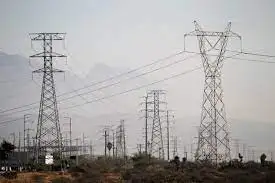Japan vows to stabilize stricken plant
By Toronto Star
NFPA 70b Training - Electrical Maintenance
Our customized live online or in‑person group training can be delivered to your staff at your location.

- Live Online
- 12 hours Instructor-led
- Group Training Available
The governmentÂ’s timeline for stabilizing the plant was called into question after new data showed that the damage to one reactor at the Fukushima Daiichi nuclear complex was worse than expected.
That assessment also prompted the government to acknowledge that the reactorÂ’s fuel rods had mostly melted soon after the March 11 earthquake and tsunami knocked out the plantÂ’s cooling system.
Until all the reactors are safely shut down, they continue to leak radiation, though in much smaller amounts than in the early days of the disaster.
Still, the sheer volume of contaminants spewed from the plant — and their buildup in places outside the 20-kilometre evacuation zone — persuaded the government to order residents to leave more towns in late April. Some of those evacuations have already begun.
In a rare bit of good news, authorities said that their original timeline for stabilizing the reactors is achievable because the temperature inside the Unit 1 reactor core has fallen to nearly 100 Celsius, a level considered safe and close to a cold shutdown.
“We believe we can stick to the current time frame,” said Goshi Hosono, the prime minister’s aide and nuclear crisis task force director, referring to the timeline laid out in April of bringing the plants three troubled reactors to a cold and stable shutdown in six to nine months.
“What’s crucial is how we can proceed with cooling. Even though the cores had melted, they are somewhat kept cool,” Hosono said.
The plant, operated by the Tokyo Electric Power Co., is still leaking a massive amount of contaminated water — just one of many problems facing workers who have been trying to bring it under control the last two months.
Hosono said that a similar meltdown had probably occurred Units 2 and 3 as they were both out of water for more than six hours after the March 11 power outage. Unit 1Â’s reactor core was out of water for more than 14 hours, he revealed.
Most of the fuel in Unit 1 has melted and slumped to the bottom of the pressure vessel that holds the rods together, and some of that ate through the vessel and trickled into the large beaker-shaped containment vessel, officials said.
Meanwhile, about 50 residents from Kawamata and four families from Iitate have already vacated their homes and began to adjust to life in evacuation centres after leaving their homes on previous government orders.
The towns are among several that have registered relatively high radiation readings but are outside a previous 20-km radius evacuation zone around the nuclear plant.
In late April, the government said residents in these areas should prepare to evacuate over the coming month due to concerns about cumulative radiation.
Officials in Iitate said they intend to have most of the townÂ’s residents evacuated by the end of the month. The scenic, rural village had a population of 6,500 before the earthquake and about 2,000 people have already moved out voluntarily.
Four families with babies or pregnant women left the town, according to an Iitate official who did not give his name because he was not authorized to speak to the media.
He said it is difficult to estimate how many people remain in the town because many are evacuating on their own and the village does not have details on their circumstances.
Officials said they have not set an exact date for the final evacuations because some residents may have trouble leaving — because they own livestock or for other reasons — and may require extra time.











